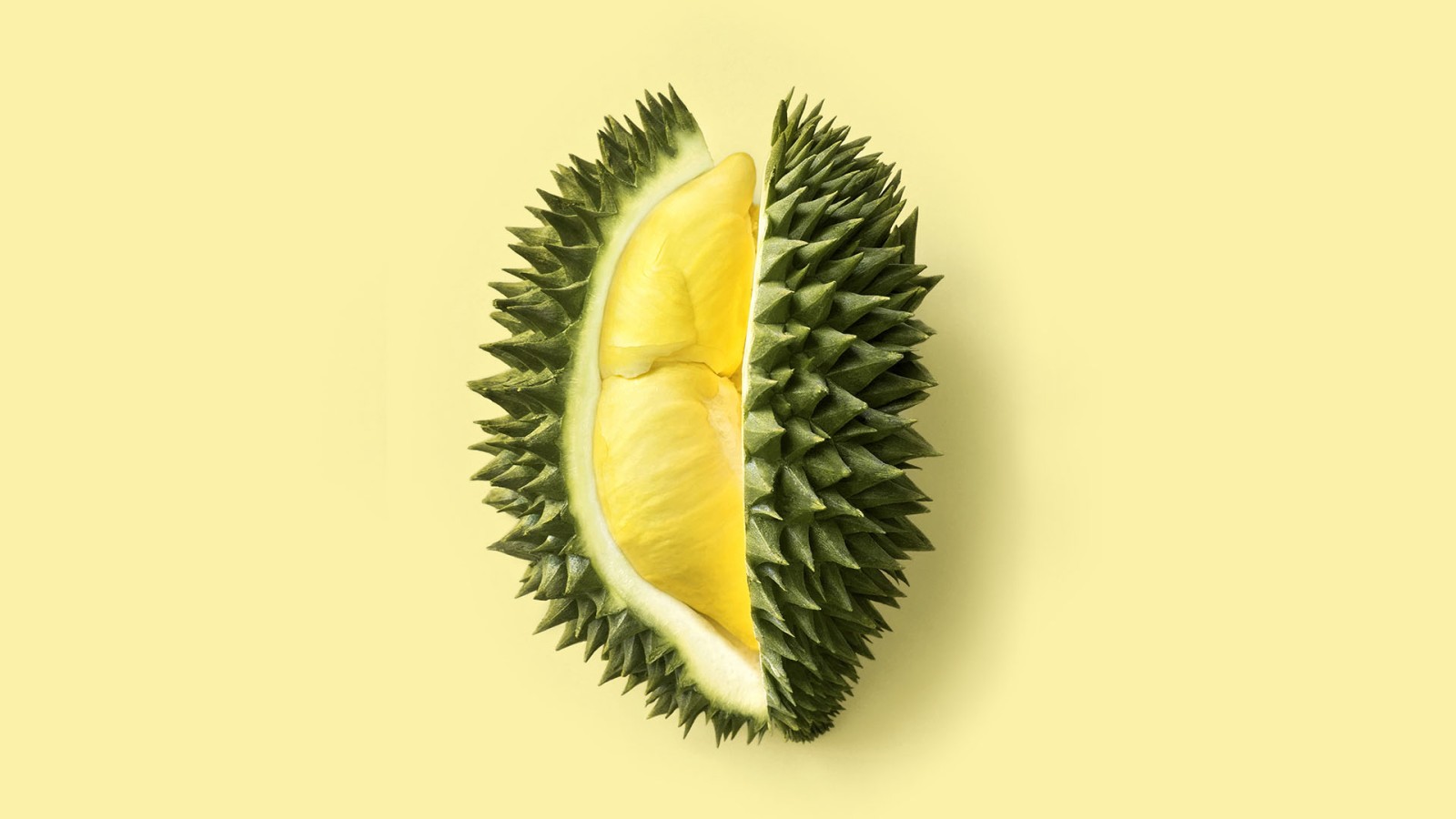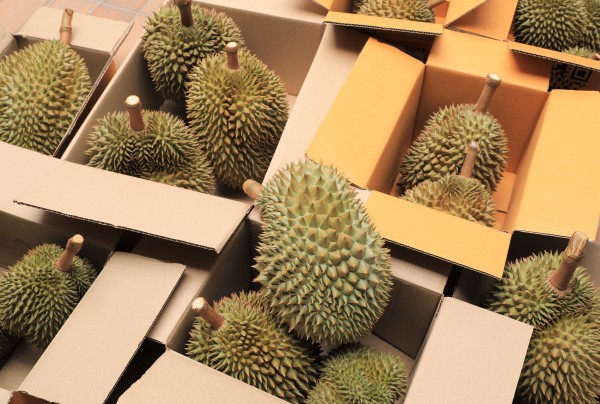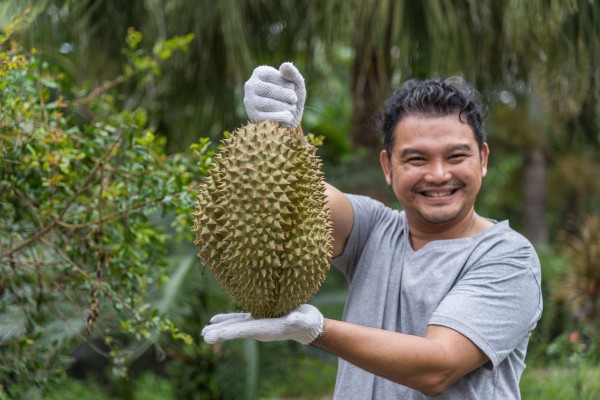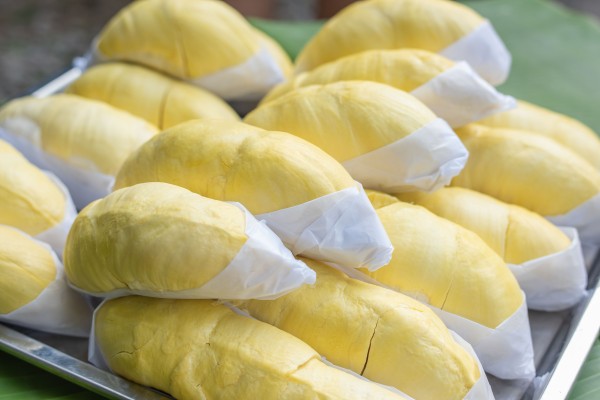How to Make your Brand Stand Out
Being a newbie in any industry is tough, most especially in the cutthroat world of food and bever-ag...

March 31, 2022
The durian offers a polarizing experience. So-called the “king of fruits” in various parts of Southeast Asia, its most common variation comes as large and thorny, with a strong, pungent smell and a delicious, creamy texture that’s akin to an ice cream bar. The durian’s lingering scent, which has been compared to rotten food and fresh-from-the-gym socks, is so notorious that some establishments have banned it to avoid offending others.
The durian offers a polarizing experience. So-called the “king of fruits” in various parts of Southeast Asia, its most common variation comes as large and thorny, with a strong, pungent smell and a delicious, creamy texture that’s akin to an ice cream bar. The durian’s lingering scent, which has been compared to rotten food and fresh-from-the-gym socks, is so notorious that some establishments have banned it to avoid offending others.
Like a conquest with obstacles, however, once you get past the aroma, the durian is rife with rewards.

The science behind the scent
Researchers at the Leibniz-Institute for Food Systems Biology at the Technical University of Munich (Leibniz-LSB@TUM) attribute durian’s distinctive odor to a rare amino acid called ethionine, which is the precursor to the putrid-smelling odorant ethanethiol.
Based on Leibniz-LSB@TUM’s findings published on Science Direct, the ethionine content in the pulp grows as the fruit ripens, thus also increasing the amount of ethanethiol. At moderate doses, the amino acid has been proven to develop positive immunomodulatory effects. However, high concentrations of it can have disadvantages, such as liver damage. This effect corroborates an earlier 2009 study in Japan that discovered how durian restricts the enzyme aldehyde dehydrogenase (ALDH), which the liver uses to break down alcohol. This is the scientific basis behind old Asian folklore that you shouldn’t consume the fruit while drinking.
Fortunately, a person would have to eat around 580 kilograms of durian in one day to feel any of those consequences.

Durian’s health privileges
The health benefits of durian are well-known, perhaps because they’re the primary selling point to encourage the uninitiated to try the fruit. Universiti Teknologi Malaysia broke down durian’s nutritional value per 100 grams and it notably had high proportions of carbohydrates, vitamin C, potassium, folate, beta carotene, and vitamin A, while featuring several other important nutrients. Plus, it’s low in cholesterol.
Here are some of the reasons eating durian can help your physical well-being.
It manages anemia.
The high level of folic acid present in durian helps in the production of hemoglobin, which takes a hit when one is diagnosed with anemia. Moreover, folic acid is also a necessary supplement for pregnant women because it helps promote regular tissue growth and protects the brain and spine of the baby.
It builds stronger bones.
Durian may rank low on the calcium scale, but its potassium content covers 9% of one’s daily potassium needs. Potassium aids in distributing calcium in the bones, as well as other nutrients into the cells. It also helps in kidney function, regulates heartbeat, and ensures muscle efficiency.
It’s laden with fiber.
Thanks to high amounts of fiber as well as probiotics, durian relieves common woes such as constipation, bloating, flatulence, indigestion, and cramps.
It’s loaded with antioxidants.
Antioxidants boast numerous health properties, from combating cancer to keeping the signs of aging at bay. Antioxidants offset free radicals, which can cause cell damage which, in turn, can lead to the degradation of the central nervous system, accelerate age-related physiological concerns, advance autoimmune and inflammatory issues, among many other problems.
Moreover, durian is antibacterial and anti-inflammatory.

How to enjoy durian?
To reap the durian’s numerous benefits, one must first eat it. According to yearofthedurian.com, a blog committed solely to a couple’s dedication to trying durian varieties all over Asia for 12 months, finding the right durian that will appeal to one’s palate is crucial.
Some durians are dry, some are extra creamy, some are orange, and some have smooth, spike-free rinds. Some kinds taste better fresh while others are more palatable when they’re bordering on being overripe.
Milder varieties, such as Kob Yellow and Nanam in Davao, are sweet with a gentler stench. Meanwhile, the Arancillo, also found in Davao, flaunts a more brazen flavor with a touch of bitterness. If you’re one for texture, the Durio Graveolens is a small, sturdy number with reddish-orange flesh that’s strong in odor, with a cheesy, velvety mouthfeel.
Personal preference always comes into play when choosing anything, but that holds especially true for something that is as diverging as durian. If one can’t get past the smell, there are other ways to enjoy it—like candied or in a dessert.
Sources:
“Inhibition of aldehyde dehydrogenase enzyme by Durian (Durio zibethinus Murray) fruit extract,” Food Chemistry, Vol. 117 (November 2009)
“Discovering what makes durian fruit stink,” Leibniz-Institut fur Lebensmittel-System-biologie an der TU Munchen (February 28, 2020)
Check out these food fusions between Filipino and Middle Eastern cuisines
The unending quest for healthy and sustainable food amid changing lifestyles
A quick look at the Philippine food staple often getting a bad health rap